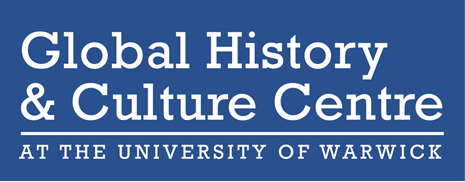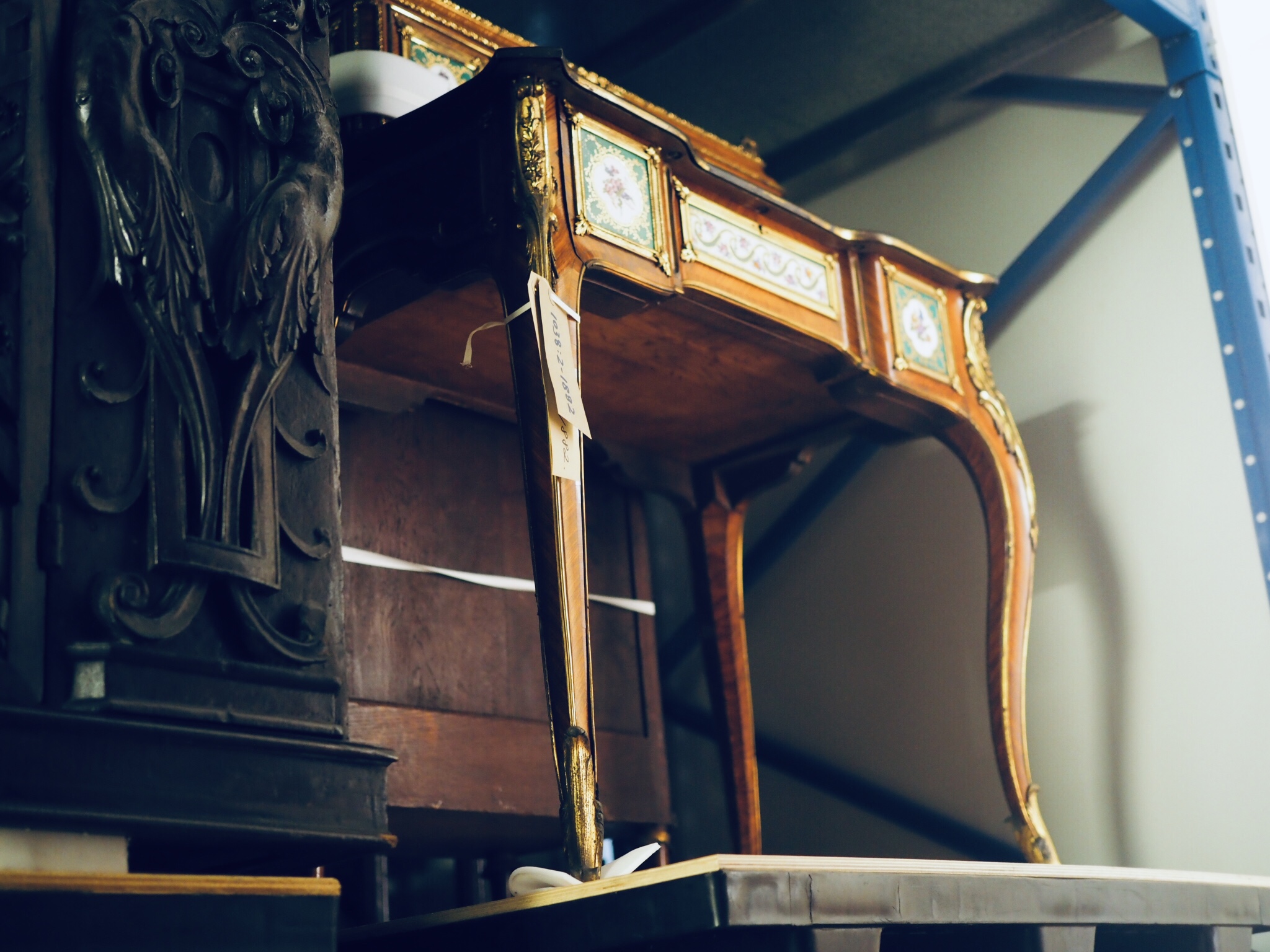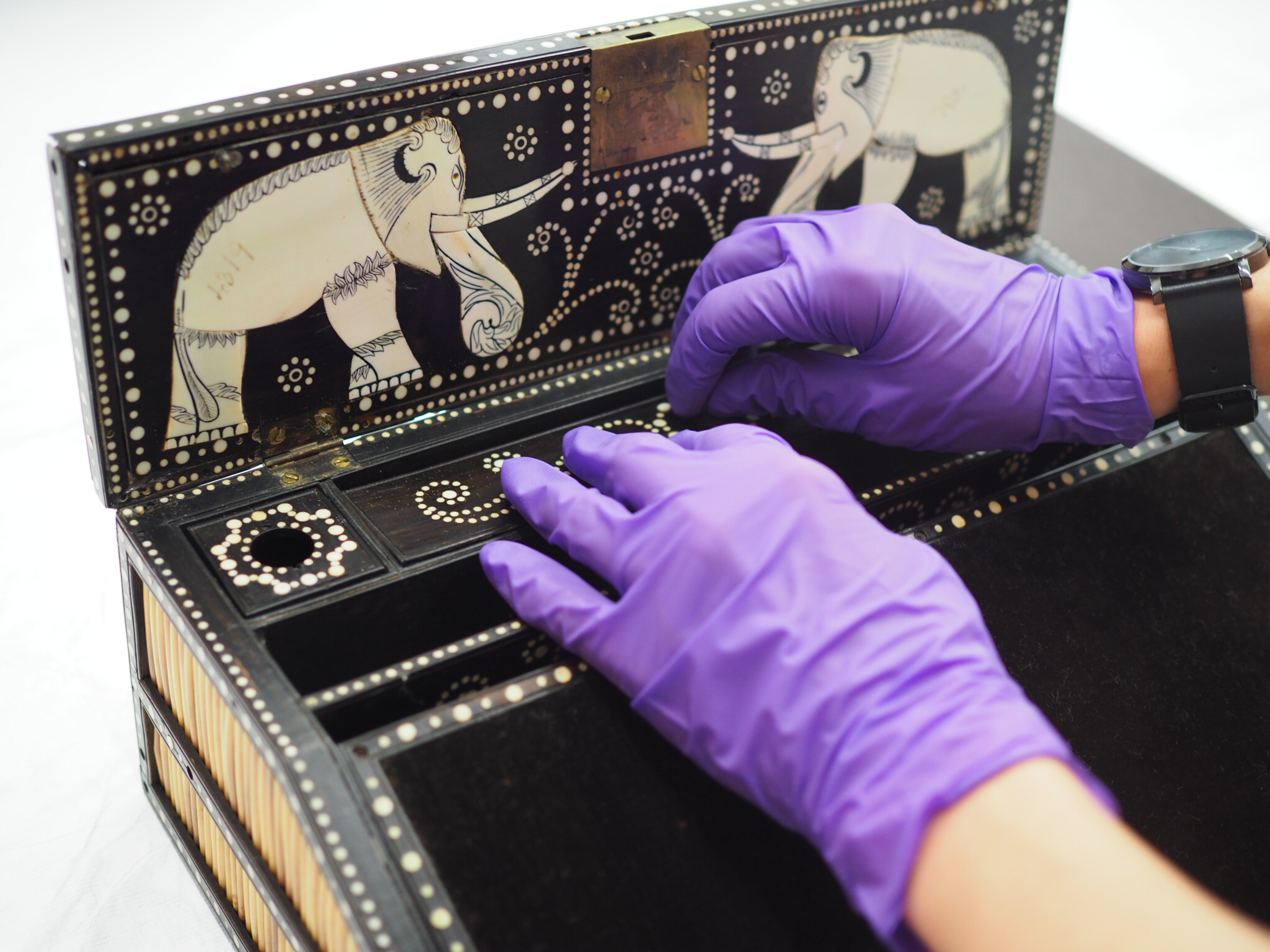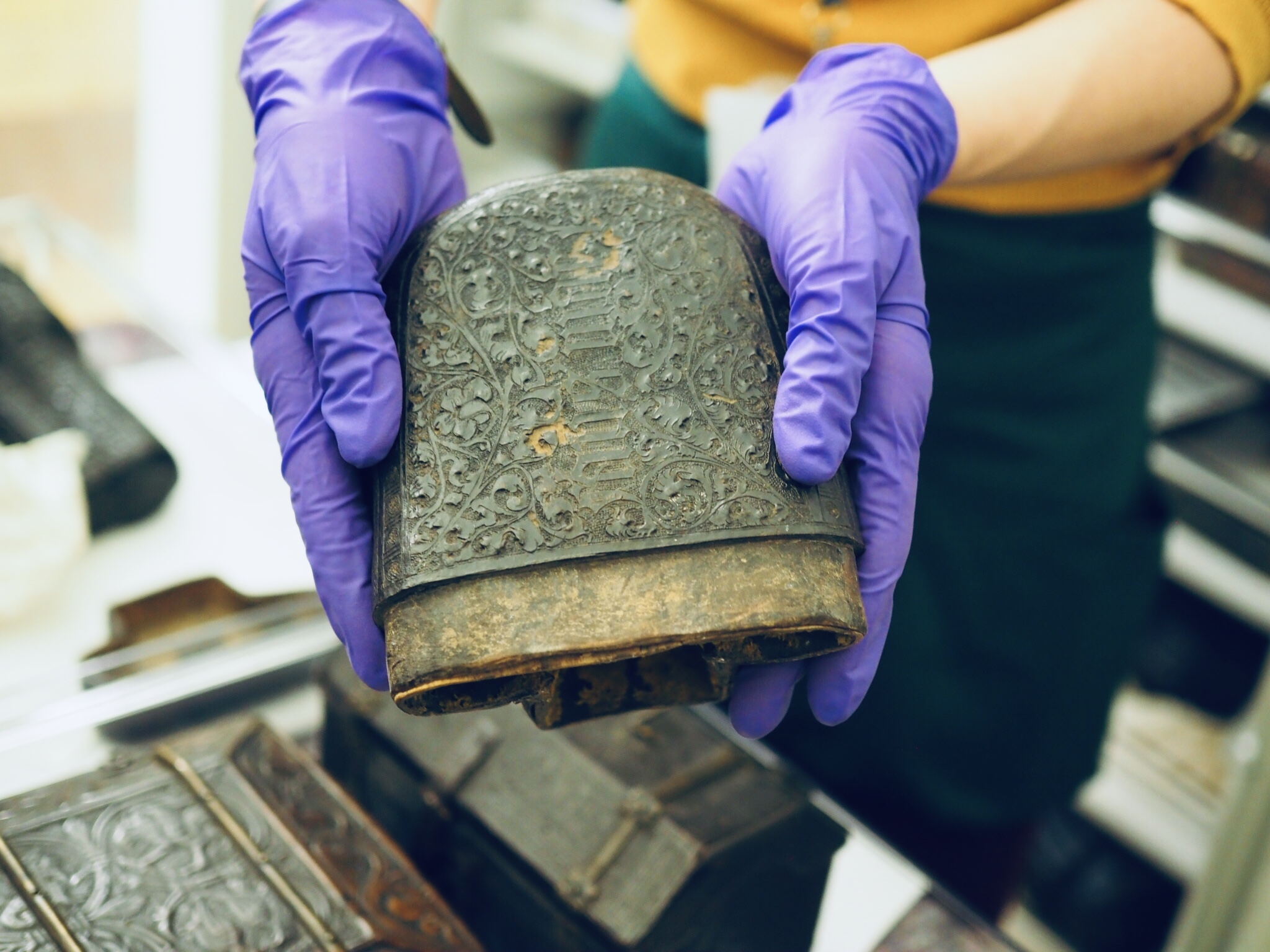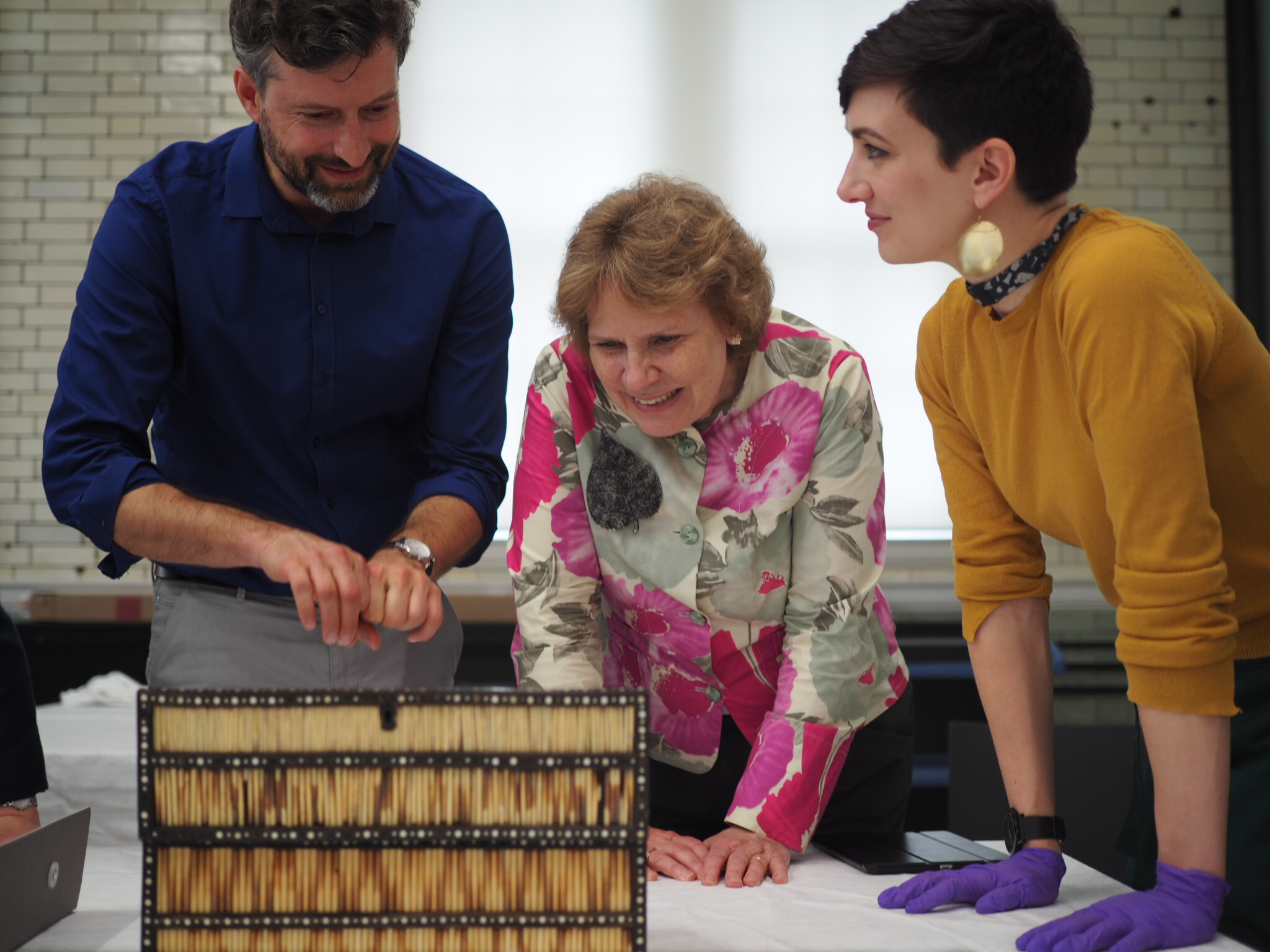V&A Salon 3
On Friday 7 June 2019 the last of three V&A Salons took place as part of the AHRC-funded Global Microhistory network, with the theme of 'Information, Writing, and Cultures of Correspondence'. Organised by Maxine Berg, this third salon session took place at the V&A stores at Blythe House, London, under the expert guidance of Avalon Fotheringham, curator of South Asian textiles at the V&A.
Entering the Museum Stores
After two successful salon events held in the V&A's Europe 1600-1815, Renaissance, and South Asia, and Islamic Middle East galleries, participants of the final Global Microhistory Salon had the rare opportunity to enter the V&A stores held at Blythe House, London, where 250,000 objects are stored for research and conservation purposes. Focused on the theme of 'Information, Writing, and Cultures of Correspondence', a global tour de force from west to east took us past objects produced in England, France, Italy, the Ottoman Empire, Persia, India, Central Asia, China, and Japan, and from the eighth to the nineteenth century. Some objects, such as the nineteenth-century Bonheur-du-jour or wooden writing desk fitted out with eighteenth-century porcelain plaques (1038-1882) could only be observed as stored above eye level in the multi-level storage spaces. Others, such as the late fifteenth-century Italian leather writing case (5425-1859) or the exquisite eighteenth-century Ottoman writing box (262-1869) could be seen opened and displayed up close. Following the tour of some of the stores, the participants had the pleasure of observing six more objects taken out of the store and displayed on a table in the Clothworkers' Centre Seminar Room, where they could be inspected at close range. Here, objects included a twelfth-century brass inkwell from Khorasan (Iran) displaying several human figures including a seated scribe (M.86-1969); a thirteenth/fourteenth-century jade water dropper in the shape of a lotus leaf made in China (1857-1888); and a nineteenth-century lacquer writing box decorated with mother-of-pearl produced in Japan for the European market (51:1 to 3-1852). One of the impressive highlights of the day was the incredibly-well preserved bundle of 8th-century textile and paper fragments found at Miran fort in north-western China, once a Silk Road outpost of the Tibetan Empire (LOAN:STEIN.493). Excavated by the archaeologist Marc Aurel Stein in 1907, some of the fragments in what is now known as the Stein Collection provide examples of early Tibetan writing.
The session closed with a roundtable discussion about the way to situate these varying material manifestations of global writing cultures into emerging narratives of Global Microhistory, featuring participants from Warwick, Oxford, LSE, the V&A and UCL.
A recording of the discussion can be accessed here.
Photo Slideshow
Photo credit: Adrianna Catena.
